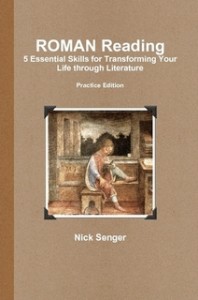Stimulate Higher Thinking with the Random Simile Creator
 Mike Miller’s Simile Generator is like a box of chocolates: you never know what you’re going to get. Press a button and it spits out two parts of a simile, the tenor and the vehicle. Students are left to supply the grounds of comparison. Here’s a quick review of those three parts, and how you can use this in your classroom.
Mike Miller’s Simile Generator is like a box of chocolates: you never know what you’re going to get. Press a button and it spits out two parts of a simile, the tenor and the vehicle. Students are left to supply the grounds of comparison. Here’s a quick review of those three parts, and how you can use this in your classroom.
The Three Parts of a Simile (or Metaphor)
Every simile has three parts: a tenor, vehicle and grounds. Let’s use the following simile as our example: Sheila moved like a panther.
- The tenor of the simile is what the writer is trying to clarify or make more understandable. In our example, the tenor is Sheila.
- The vehicle is the concrete object that is being compared to the tenor. Sheila is like a panther.
- The grounds of a simile refers to the qualities of the vehicle that the reader is meant to apply to the tenor. For example, the writer is most likely trying to say that Sheila moved with power and stealth, not that she has whiskers and four feet (although she may be prowling on all fours–we would have to see more context).
Two More Examples
James was like a bull in a china shop.
- Tenor: James
- Vehicle: a bull in a china shop
- Grounds: big and clumsy
The students on the playground were like a herd of cattle.
- Tenor: the students on the playground
- Vehicle: a herd of cattle
- Grounds: in groups that move together; herded by a teacher
Similes and Metaphors in the Classroom
It’s crucial that students understand how similes and metaphors work from the perspective of both reading and writing. Writing similes (while avoiding cliches) requires high level thinking, and giving students practice creating them will improve their overall communication skills.
Mike Miller’s Simile Generator produces a relationship between a random abstract noun and a random concrete noun and challenges the reader to create a connection between them. Here are some similes it produced for me:
- Integrity is like a dagger.
- Bitterness is like a flea.
- Loyalty is like a candle.
- Optimism is like a towel.
The students must supply the grounds. How is bitterness like a flea? This is a terrific question, because first students must have a solid understanding of “bitterness,” and then they need to use their imaginations to connect it to a flea. They might come up with something like this: “Bitterness is like a flea; it’s a constant irritation and it distracts you from what’s really important.”
Other students may make other connections, which gives you an opportunity to talk about interpreting literature or the importance of personal experience in making meaning from a text. My experience of fleas may be different from yours, so the way I connect them to bitterness may be different from the way you connect them.
You can use the generator in your classroom in several ways. You can generate 5-10 similes yourself and then type them up for students to work with, or you can instruct students to visit the site themselves and to generate a few to solve on their own.
Try this in your classroom. It’s like eating a box of chocolates–you never know what you’re going to get.












